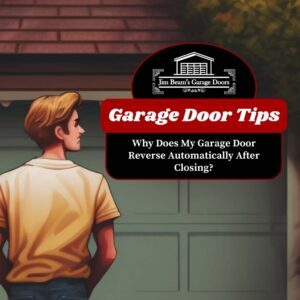Let’s Get Organized!
Welcome to our comprehensive guide on reclaiming square footage and transforming your garage into a well-organized and functional space. The garage is often a neglected area in many homes, accumulating clutter and becoming a dumping ground for unused items. However, with the right approach and organization strategies, you can reclaim valuable square footage and unlock the full potential of your garage. From decluttering and categorizing items to maximizing storage space and creating functional zones, you’ll learn how to transform your garage into an efficient and inviting space that meets your specific needs. Let’s dive in and discover the secrets to reclaiming square footage in your garage!
- Assess Current Organization
- Sort and Declutter
- Keep, Donate, or Discard
- Plan Your Layout
- Utilize Vertical Wall Space
- Overhead Storage Spaces
- Modular Storage Systems
- Magnetic Storage Systems
Assess Current Organization
When assessing your garage’s current state of organization, start by taking a comprehensive look at the entire space. Begin by surveying the floor, walls, and ceiling to get a complete picture of its condition. Pay attention to any areas that appear cluttered, disorganized, or underutilized.
- Storage Systems: Take note of the storage systems you currently have in place, such as shelves, cabinets, or racks. Assess their effectiveness and whether they are being used optimally.
- Accessibility: Evaluate how easily you can access items in your garage. Are there any obstacles blocking your path or hindering your ability to reach stored items? Identify any areas where improvements can be made to enhance accessibility.
- Safety Considerations: Look out for any potential safety hazards in your garage. Check for exposed wires, tripping hazards, or flammable materials stored improperly. Address these concerns as part of your overall garage organization plan.
- Space Utilization: Consider how efficiently the available space is being used. Are there unused corners or wasted vertical space that could be utilized more effectively? Take note of areas where you can maximize storage and create functional zones.

“Properly assessing your garage’s current state of organization is the first step toward creating an efficient and functional space. Taking stock of your storage systems, accessibility, safety considerations, and space utilization can reveal areas for improvement and help you plan an effective reorganization.”
Jim Beam – Owner of Jim Beam’s Garage Doors
Sort and Declutter
To effectively organize your garage, it’s crucial to categorize your belongings into groups. This process allows you to gain clarity on the different types of items you have and facilitates better organization. This step is essential in reducing unnecessary items and making room for the items you truly need and use regularly. Follow these steps to sort and declutter your garage items:
- Begin by creating categories: Identify the main categories that best represent the items in your garage. Common categories include tools, sports equipment, seasonal items, household supplies, automotive accessories, and gardening equipment.
- Gather and group items: Take each category one at a time and gather all the related items. For example, gather all your tools in one area, sports equipment in another, and so on. This step helps you visualize the quantity and variety of items within each category.
- Evaluate item condition and usage: Assess each item within the categories you’ve created. Determine if they are still in good working condition and if you have used them recently. Ask yourself if the item still serves a purpose or holds sentimental value.
- Separate items for disposal or donation: Create separate piles or boxes for items that are no longer needed, damaged beyond repair, or haven’t been used in a long time. These items can be discarded or donated, depending on their condition.
- Consider selling valuable or lightly used items: If you come across items that are still valuable or in good condition but no longer serve your needs, consider selling them through online platforms, garage sales, or classified ads. This can help you declutter while also recouping some of your investment.
- Revisit sentimental items: For items that hold sentimental value but are not regularly used, consider storing them in labeled bins or boxes. Store them in an easily accessible area of the garage or consider alternate storage options if they take up too much space.
Keep, Donate, or Discard
When decluttering your garage, it’s important to carefully evaluate each item to determine whether to keep, donate, or discard it. By evaluating each item based on usefulness, sentimental value, and condition, you can make informed decisions about what to keep, donate, or discard. This process allows you to free up valuable space in your garage and prioritize items that align with your current needs and lifestyle. Consider the following factors during the decision-making process:
- Usefulness: Assess the usefulness of each item. Ask yourself if it serves a practical purpose or if it’s something you regularly use. Consider whether it enhances your life or if it’s simply taking up valuable space. Be honest with yourself and prioritize functionality.
- Sentimental Value: Some items may hold sentimental value, such as heirlooms or mementos. While it’s essential to acknowledge their significance, evaluate whether their sentimental value outweighs the need for space and organization. If possible, find a designated storage area for sentimental items that won’t interfere with your main garage organization goals.
- Condition: Take a close look at the condition of each item. Discard items that are broken, damaged beyond repair, or pose a safety risk. Consider the cost and feasibility of repairing items versus replacing them. Remember, maintaining a clutter-free and safe environment should be a priority.
- Space Considerations: Assess the available space in your garage and the storage options you have. Be mindful of overcrowding and aim for a clean and organized look. Prioritize items that are essential, frequently used, or require easy access, and be prepared to let go of items that no longer fit within the available space.
- Donation Opportunities: Items that are in good condition but no longer needed can be donated to local charities, shelters, or community organizations. Consider donating functional tools, sporting equipment, or household items that can benefit others. Research local donation centers and their accepted items to ensure your donations are appreciated and put to good use.
- Responsible Disposal: Items that are damaged, expired, or no longer functional should be disposed of responsibly. Check your local waste management guidelines for proper disposal methods, recycling options, or hazardous waste drop-off locations.
“Deciding whether to keep, donate, or discard items is a crucial part of decluttering. Assessing the usefulness, sentimental value, and condition of each item helps you make informed decisions that prioritize functionality and organization.”
Jim Beam – Owner of Jim Beam’s Garage Doors
Plan Your Layout
To effectively plan the layout of your garage, it’s essential to start by taking accurate measurements and assessing the available space. By taking measurements and assessing the available space in your garage, you’ll have a solid foundation for planning an efficient and functional layout. Understanding the dimensions and limitations of the space allows you to make informed decisions when choosing storage solutions, creating designated zones, and optimizing the garage for your specific needs. Follow these steps to ensure a well-designed and optimized layout:
- Measure the dimensions: Begin by measuring the floor space of your garage, including its width, length, and any alcoves or recessed areas. Use a tape measure or laser measuring tool to obtain precise measurements. Record these measurements on paper or digitally for reference during the layout planning process.
- Consider ceiling height: Measure the height of your garage ceiling to determine the vertical space available for storage solutions such as overhead racks or suspended shelves. Take note of any obstructions, such as ductwork, beams, or garage door mechanisms, that may affect the usable ceiling space.
- Assess wall space: Measure the length and height of each wall in your garage. Pay attention to any doors, windows, or built-in features that may limit the available wall space for storage or organization systems.
- Identify obstacles or limitations: Take note of any obstacles or limitations that may impact the layout and functionality of your garage. This can include water heaters, electrical panels, HVAC systems, or structural elements. Be aware of building code requirements and maintain proper clearances around these objects.
- Evaluate traffic flow: Consider how you and others move through the garage space. Identify any areas that require clear pathways, such as entryways or access to vehicles. Ensure there is enough room to maneuver comfortably and safely within the garage.
- Take photos or sketches: Visualize your garage layout by taking photos or sketching the existing space. This will help you better understand the current configuration and plan accordingly.
“Planning the layout of your garage starts with taking accurate measurements and understanding the available space. This foundation allows for informed decisions when choosing storage solutions and creating designated zones, ultimately optimizing the garage for your specific needs.”
Jim Beam – Owner of Jim Beam’s Garage Doors
Utilize Vertical Wall Space
One of the most effective ways to maximize storage space in your garage is by utilizing vertical wall space. Installing wall-mounted shelving units or cabinets provides a practical solution for organizing and storing frequently used items while keeping them easily accessible. Consider the following points when incorporating wall-mounted storage options:
- Evaluate your storage needs: Take stock of the items you plan to store on the shelves or in the cabinets. Consider their size, weight, and quantity to determine the type and strength of the shelving or cabinets required. This assessment will help you choose the appropriate storage solution for your specific needs.
- Choose sturdy and durable materials: Opt for shelves and cabinets made of durable materials such as metal, heavy-duty plastic, or sturdy wood. These materials ensure longevity and the ability to withstand the weight of your stored items.
- Select adjustable shelves: Look for shelving units that offer adjustable shelf heights. This allows you to customize the spacing between shelves according to the height of your items, maximizing the use of vertical space.
- Utilize wall studs or anchor systems: When installing wall-mounted storage, ensure that they are securely attached to wall studs or use appropriate anchor systems. This ensures stability and prevents accidents caused by shelves or cabinets becoming loose or falling.
- Organize items strategically: Categorize and group items as you place them on the shelves or in the cabinets. Keep frequently used items within easy reach, while storing less frequently used items on higher or lower shelves. Consider using labeled bins or clear storage containers to further organize and compartmentalize smaller items.
- Leave room for future expansion: As you install wall-mounted storage, leave some space for future expansion or rearrangement. This flexibility allows you to adapt the storage system as your needs evolve over time.
Overhead Storage Spaces
To fully optimize the available space in your garage, it’s essential to take advantage of the often-overlooked overhead area. By installing overhead storage racks or ceiling-mounted platforms, you can effectively store items that are used less frequently, such as seasonal decorations or bulky equipment. Consider the following points when utilizing overhead storage:
- Assess the ceiling height and structural integrity: Before installing overhead storage, ensure that your garage’s ceiling has sufficient height to accommodate the racks or platforms without interfering with other elements like lighting fixtures or garage door mechanisms. Additionally, verify that the ceiling structure is capable of supporting the weight of the storage system and the items to be stored.
- Choose appropriate storage racks or platforms: Select overhead storage racks or platforms that are specifically designed for garage use. Look for sturdy materials like steel or heavy-duty plastic that can withstand the weight and provide long-lasting durability.
- Determine weight capacity and dimensions: Consider the weight capacity and dimensions of the overhead storage system to ensure it can safely accommodate the items you plan to store. Be mindful of the size and weight distribution to maintain stability and prevent any hazards.
- Organize and label items: Prioritize efficient organization by categorizing and labeling the items you store overhead. Use clear plastic bins or labeled storage containers to easily identify and locate specific items when needed. This approach enhances accessibility and minimizes the time spent searching for items.
- Safety precautions: When installing overhead storage, follow all manufacturer guidelines and safety precautions. Ensure proper installation and secure attachment to the ceiling joists or rafters. If necessary, consult a professional to ensure the installation is done correctly and safely.
- Accessibility and convenience: Consider how you will access the overhead storage. If heavy or bulky items are stored, ensure you have a safe and convenient method for retrieving them. Consider using sturdy step ladders or investing in motorized storage systems for easy lowering and raising of the racks or platforms.
“Installing overhead storage racks or ceiling-mounted platforms helps fully utilize the often-overlooked overhead space in your garage. This is perfect for storing less frequently used items like seasonal decorations or bulky equipment.”
Jim Beam – Owner of Jim Beam’s Garage Doors
Modular Storage Systems
When it comes to optimizing garage storage, investing in modular storage systems can provide unmatched flexibility and adaptability. These systems offer customizable solutions that can be easily adjusted to accommodate your changing storage needs over time. Consider the following aspects when incorporating modular storage systems:
- Customizable shelving units: Look for shelving units that offer adjustable shelves. This feature allows you to modify the spacing between shelves to accommodate items of different heights. It provides the flexibility to store various sizes of containers, tools, and equipment effectively.
- Stackable bins and containers: Opt for stackable bins or containers that can be easily stacked on top of each other. These containers help maximize vertical space and allow for efficient use of available storage capacity. Additionally, choose clear containers that allow you to see the contents without having to open each bin.
- Adjustable hooks and racks: Consider installing adjustable hooks and racks on the walls of your garage. These versatile storage solutions can be easily repositioned to accommodate different items such as bicycles, garden tools, or sports equipment. By adjusting the height and position of the hooks or racks, you can create a customized storage system that suits your specific needs.
- Modular cabinet systems: Explore modular cabinet systems that offer interchangeable components. These systems typically include cabinets, drawers, and shelves that can be configured and rearranged based on your storage requirements. With modular cabinets, you can easily adapt the layout and storage capacity to accommodate different items and optimize the use of available space.
- Utilize pegboards and slatwall systems: Incorporate pegboards or slatwall systems on your garage walls. These systems provide a flexible and versatile solution for hanging tools, small items, and accessories. The hooks and brackets can be easily moved and rearranged to create an organized and easily accessible storage setup.
- Plan for future adjustments: Consider the potential for future changes in your storage needs. Choose modular storage systems that allow for easy additions, removals, or reconfigurations as your storage requirements evolve. This adaptability ensures that your garage organization remains functional and efficient over time.
Magnetic Storage Systems
When it comes to organizing small metal tools and accessories in your garage, utilizing magnetic strips can be a practical and efficient solution. By attaching magnetic strips to the walls or inside cabinet doors, you can create a designated space to hold and display your small metal items, such as screwdrivers or wrenches. Consider the following points when using magnetic strips for organization:
- Determine the ideal location: Assess your garage layout and identify suitable areas where you can mount the magnetic strips. Common locations include the walls near your workbench, inside cabinet doors, or even on the side of toolboxes. Choose a location that is easily accessible and convenient for your workflow.
- Select magnetic strips with sufficient strength: When purchasing magnetic strips, ensure they have adequate strength to securely hold your metal tools and accessories. Stronger magnets will prevent items from slipping or falling off the strips, providing a reliable storage solution.
- Install the magnetic strips: Follow the manufacturer’s instructions to properly install the magnetic strips. Ensure they are securely attached to the wall or cabinet surface to provide a stable and durable storage solution. Use appropriate mounting hardware, such as screws or adhesive strips, depending on the type of magnetic strip you choose.
- Arrange tools and accessories: Once the magnetic strips are in place, arrange your small metal tools and accessories on them. Position the items in a way that is both visually appealing and allows for easy identification and access. Consider organizing them by size or type to further streamline your workflow.
- Optimize space with additional storage solutions: Combine the use of magnetic strips with other storage solutions to maximize your organization’s efforts. For example, you can use labeled bins or drawers to store larger or non-magnetic tools nearby, ensuring all your tools are conveniently within reach.
- Regular maintenance: Periodically check and clean the magnetic strips to ensure they remain effective in holding your tools. Remove any dirt or debris that may accumulate on the surface of the strips, as this can diminish their magnetic strength.
“Magnetic storage systems are practical for organizing small metal tools and accessories. By attaching magnetic strips to walls or cabinet doors, you create a designated space to hold and display your tools, keeping them easily accessible and well-organized.”
Jim Beam – Owner of Jim Beam’s Garage Doors
Frequently Asked Questions
Start by looking at the floor, walls, and ceiling to understand the space’s condition. Evaluate the effectiveness of existing storage systems, accessibility, any safety hazards, and how well space is utilized.
Begin by sorting items into categories (e.g., tools, sports equipment) to understand what you have and group related items together. This helps in deciding what to keep, donate, or discard.
Evaluate each item’s usefulness, sentimental value, and condition. Prioritize functionality and safety, consider space constraints, and opt for donating items in good condition that you no longer need.
Store sentimental items in labeled bins or boxes in an accessible area or consider alternate storage solutions if they occupy too much space.
Measure the garage’s dimensions, assess wall and ceiling space, identify obstacles, consider traffic flow, and utilize sketches or photos to visualize the layout. This helps in choosing suitable storage solutions and creating functional zones.
Install wall-mounted shelving units or cabinets, choose sturdy materials, select adjustable shelves, securely attach storage to wall studs, and organize items strategically. Leave room for future expansion.
Install overhead racks or platforms, ensure the ceiling can support the weight, organize items in labeled bins for easy identification, and use safety precautions during installation.
Modular systems offer customizable and flexible storage solutions that can be adjusted or expanded as your needs change, allowing for efficient organization of various items.
Magnetic strips can efficiently store small metal tools and accessories, keeping them accessible and organized. Ensure the strips are strong enough and installed in convenient locations.
We Hope This Helps You Organize Your Garage!
In conclusion, properly organizing your garage is a transformative process that allows you to reclaim valuable square footage and create a functional space that meets your specific needs. By evaluating your current garage situation, sorting and decluttering items, planning the layout, and maximizing storage space, you can create an organized and efficient environment.
If you don’t know already, Jim Beam’s Garage Doors is one of the top-rated garage door installers and repairers in the Northern Colorado area. With over 120+ reviews on Google and an average rating of 4.9 stars and top-rated status on HomeAdvisor, you can trust Jim Beam’s to do the job right the first time.











